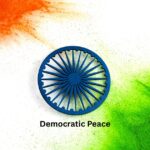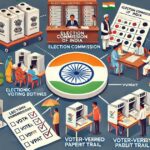The major determinants of elections encompass a range of factors that influence voter behaviour and outcomes. Key among these are social identities—such as caste, religion, and gender—which shape political preferences, and media influence, which informs and mobilizes the electorate.
Understanding these determinants is crucial for analyzing electoral dynamics and the broader political landscape. Elections are the bedrock of any democracy, providing a platform for citizens to express their political will.
In India, the world’s largest democracy, elections are not just a matter of choosing representatives; they reflect the diverse tapestry of social identities and the pervasive influence of media.
This blog post searches into two major determinants of elections: social identities and media. Understanding these factors is crucial for comprehending the dynamics of electoral behaviour in India.
1. Understanding Social Identities:
Definition of Social Identities:
Social identities refer to the various affiliations that individuals associate with, including caste, religion, ethnicity, and gender.
These identities significantly influence political preferences and voting behaviour, shaping the electoral landscape in profound ways.
Caste Dynamics:
Caste remains a pivotal factor in Indian politics. Historically entrenched in the social fabric, caste influences voting patterns and party alignments.
The Indian Constitution’s reservation system aims to uplift marginalized communities, leading to the rise of caste-based parties.
For instance, the Bahujan Samaj Party (BSP) and the Samajwadi Party (SP) emerged as significant players by mobilizing support from Scheduled Castes and Other Backward Classes (OBCs).
In elections, caste-based voting patterns often lead to decisive outcomes, as seen in various state elections where caste solidarity drives voter turnout.
Religion and Politics:
Religion plays a critical role in shaping electoral outcomes. Political parties often cater to specific religious communities to garner support.
The rise of Hindu nationalism, particularly with the Bharatiya Janata Party (BJP), has transformed the political landscape.
The BJP’s emphasis on Hindutva has not only consolidated Hindu votes but has also polarized communal sentiments, influencing voter behaviour and preferences.
The 2019 General Elections exemplified how religious identities could be mobilized to secure electoral gains.
Gender Identity:
Gender is another significant determinant of voting behaviour. Women’s participation in elections has witnessed an upward trend, yet challenges remain.
Safety concerns, educational disparities, and societal norms often hinder women’s electoral engagement.
Political parties have increasingly recognized the need to address women-focused issues, leading to initiatives aimed at empowering female voters.
For instance, schemes related to women’s welfare can sway female voting behaviour, thereby impacting election outcomes.
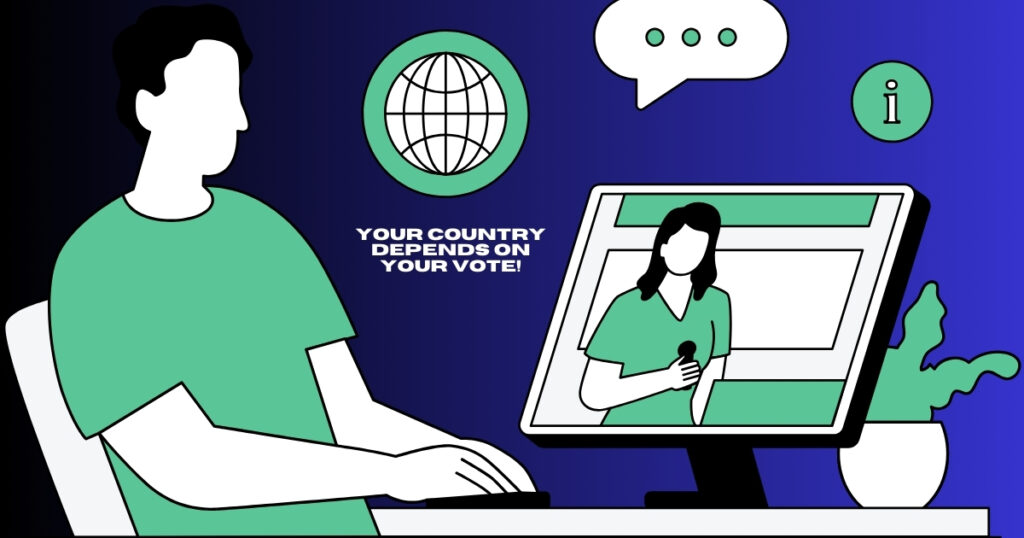
2. The Role of Media in Elections
Definition of Media:
Media encompasses various platforms, including print, broadcast, and digital channels, that disseminate information to the public
In the context of elections, media serves as a crucial tool for educating voters and shaping public perceptions.
Media as an Informational Tool:
Media plays an essential role in informing the electorate about candidates, policies, and critical issues.
During elections, extensive coverage of political campaigns, debates, and manifestos enables voters to make informed decisions.
Issues like the economy, healthcare, and education are often highlighted, influencing voter preferences.
The media’s role in presenting these issues can significantly sway public opinion and voting behaviour.
Media Influence on Public Perception:
The agenda-setting theory posits that media influences what the public perceives as important by focusing on specific issues.
Additionally, framing refers to how media presents information, which can shape voter opinions and perceptions.
For example, if the media frames an issue like unemployment as a significant concern, voters may prioritize candidates addressing this issue in their campaigns.
Social Media’s Impact:
The rise of social media has transformed electoral dynamics in India.
Platforms like Facebook and Twitter have become powerful tools for political parties to engage with voters, particularly the youth.
Social media campaigns can mobilize support and spread political messages rapidly. However, the proliferation of misinformation poses significant challenges.
During elections, fake news can spread rapidly, potentially swaying public opinion and influencing voter behavior.
The 2014 and 2019 General Elections witnessed the strategic use of social media by parties to reach out to voters effectively.
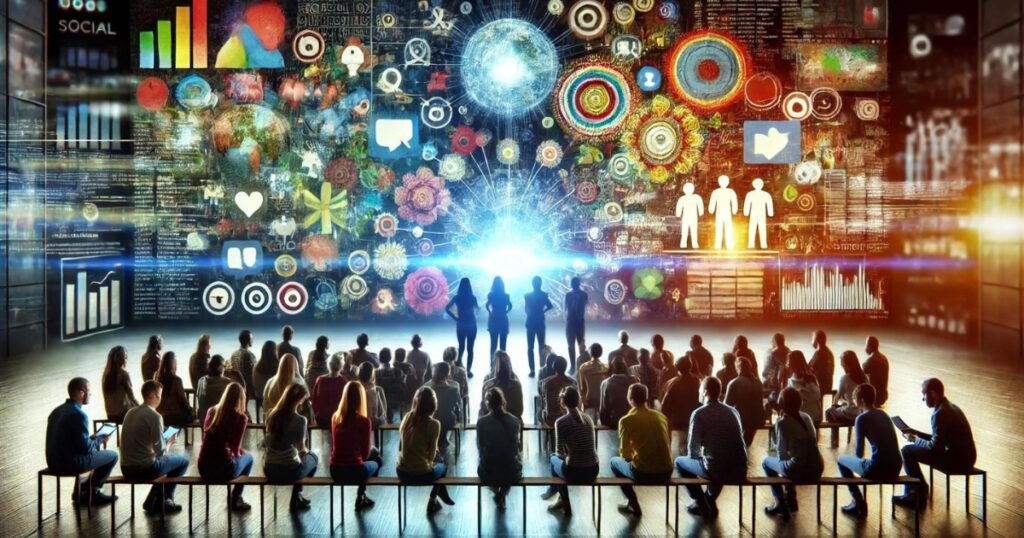
3. Intersection of Social Identities and Media:
a. Media Representation of Social Identities:
Media representation of social identities refers to how various social groups—defined by characteristics such as caste, religion, gender, and ethnicity—are portrayed in media outlets.
This representation plays a crucial role in shaping public perception and influencing the attitudes of the general populace and political actors.
In India, a diverse and multi-layered society, the media’s representation of social identities is particularly significant, as it intersects with electoral politics and social dynamics.
b. Understanding Media Representation
Media representation is not merely about visibility; it encompasses the narratives, stereotypes, and values associated with different social identities.
How these identities are represented can reinforce or challenge existing stereotypes, impacting societal attitudes and behaviours.
Stereotypes:
Stereotypes in media can lead to oversimplified and often negative perceptions of certain groups.
For example, representations of women may focus on traditional roles, while representations of certain castes or religious groups may emphasize negative traits or social problems.
Visibility:
Visibility is important for representation. When marginalized groups are underrepresented or misrepresented, it can lead to a lack of awareness and understanding among the broader population about their challenges and contributions.
c. The Role of Traditional Media
Traditional media—television, newspapers, and radio—has historically played a significant role in shaping public discourse.
In India, the portrayal of social identities in traditional media can have far-reaching implications for electoral outcomes and public policy.
Television and Film:
Indian cinema and television often reflect societal norms and values, contributing to the portrayal of gender roles, caste dynamics, and religious identities.
For instance, female characters are frequently depicted in stereotypical roles, which can perpetuate gender biases in society.
Similarly, films that focus on caste-based issues can either reinforce stereotypes or promote social awareness.
Print Media:
Newspapers and magazines can influence public opinion through their framing of social issues.
The language used in reporting, the choice of images, and the focus of articles can shape perceptions of various social identities.
Coverage of communal riots or caste conflicts, for example, can impact how different communities are viewed and treated.
Role of Social Media in Shaping Public Discourse:
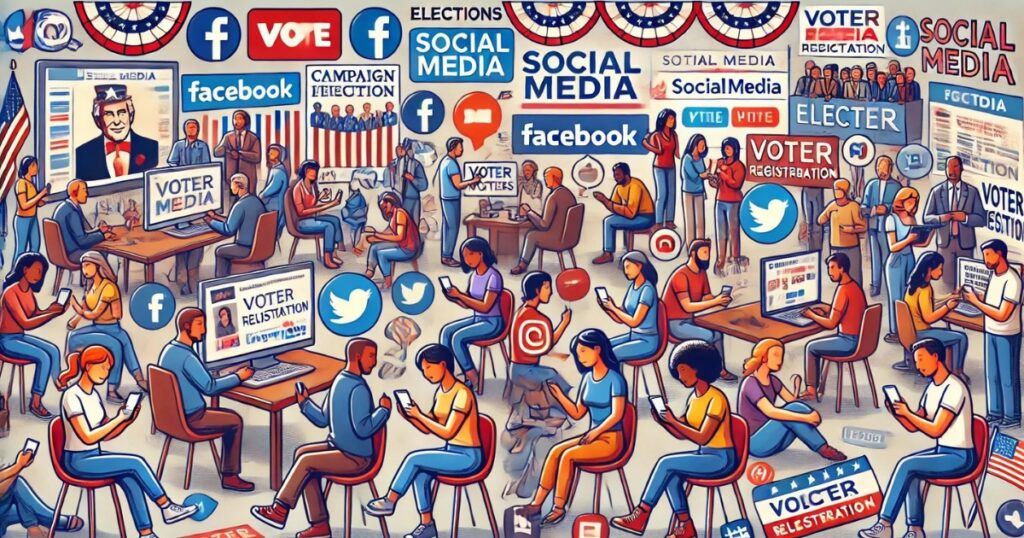
Platform for Diverse Voices:
Social media allows individuals from various backgrounds to share their opinions and perspectives, promoting inclusivity in discussions.
Real-Time Communication:
Users can communicate instantly, sharing news and information as events unfold, which enhances public engagement.
Democratization of Information:
Social media empowers individuals to participate in discussions, reducing reliance on traditional media outlets.
Mobilization for Social Issues:
It facilitates the organization of movements and campaigns, allowing users to rally around causes effectively.
Challenges of Misinformation:
The rapid spread of false information can distort public perception and lead to confusion.
Echo Chambers:
Algorithms may create environments where users are exposed primarily to like-minded views, reinforcing existing beliefs.
Impact on Issue Framing:
Social media influences how issues are presented and perceived, shaping societal norms and political landscapes.
Viral Content:
Posts can go viral, significantly impacting public opinion and driving discussions on various topics.
Here are three examples related to major determinants of elections, specifically focusing on social identities and media:
Here are three examples that specifically focus on social identities and social media as major determinants of elections:
1. #BlackLivesMatter and Voter Mobilization:
The #BlackLivesMatter movement effectively used social media to mobilize African American voters during the 2020 U.S. Presidential Election.
Activists shared information about voter registration, polling locations, and the importance of voting to address systemic racism.
The movement’s presence on platforms like Twitter and Instagram helped to energize and engage younger voters, significantly impacting turnout among Black communities.
2. Caste Dynamics in Uttar Pradesh Elections:
In the 2022 Uttar Pradesh Assembly elections, social media was leveraged by various political parties to address and mobilize specific caste identities.
The Samajwadi Party utilized platforms like Facebook and WhatsApp to disseminate messages that resonated with OBC (Other Backward Classes) voters, emphasizing caste-based issues and promises of reservation.
This targeted approach aimed to consolidate support among specific caste groups and drive electoral success.
3. Youth Engagement in Climate Politics:
During the 2019 European Parliament elections, young voters mobilized through social media platforms to emphasize climate change as a critical issue.
Campaigns like Fridays for Future, led by youth activists, harnessed platforms such as Instagram and TikTok to engage and inform their peers about the importance of voting for environmentally conscious candidates.
This movement not only highlighted the identity of youth as advocates for climate action but also significantly influenced voter turnout among younger demographics.
d. Impact on Electoral Politics

The representation of social identities in the media has direct implications for electoral politics in India. Political parties often leverage media narratives to appeal to specific voter bases.
Targeted Campaigns:
Political parties use media representations to craft targeted campaigns that resonate with particular social groups.
For instance, parties may highlight issues relevant to women or marginalized communities in their messaging to garner support.
Public Perception:
How candidates are portrayed in the media can influence voter perceptions.
Candidates who align with the values and identities of specific groups may be more successful in garnering support, while negative media portrayals can undermine their credibility.
e. Case Studies
Examining specific case studies can illustrate the impact of media representation on social identities:
Caste Representation:
The portrayal of lower castes in media can influence public attitudes toward reservation policies and social justice movements.
Documentaries or films that shed light on caste discrimination can foster empathy and understanding among the broader population.
Gender Representation:
The portrayal of women in Indian media can impact societal attitudes toward gender equality.
Campaigns such as “Beti Bachao, Beti Padhao” have utilized media to promote the importance of education for girls and challenge gender stereotypes.
Religious Representation:
Coverage of communal violence or religious celebrations can shape public perceptions of religious communities.
For example, positive representations of Muslim contributions to society can help counteract negative stereotypes.
Media representation of social identities is a powerful force that shapes public perception and influences electoral dynamics in India.
By either reinforcing stereotypes or challenging them, media plays a pivotal role in shaping how social groups are viewed and treated within society.
As India continues to evolve, the responsibility of media outlets to portray diverse identities accurately and sensitively becomes increasingly important.
Promoting media literacy and encouraging critical engagement with media representations can empower citizens to navigate the complexities of identity politics in a democratic society.
f. Recommendations for Future Research
Further research is needed to explore the long-term effects of media representation on social identities and electoral outcomes in India. This could include:
Longitudinal Studies:
Analyzing changes in media representation over time and their effects on public attitudes and voting behaviour.
Comparative Studies:
Comparing media representation across different social identities and its impact on electoral politics in various regions of India.
Impact Assessment:
Evaluating the effectiveness of media campaigns aimed at changing perceptions of marginalized groups and fostering social inclusion.
4. Campaign Strategies Targeting Social Identities:
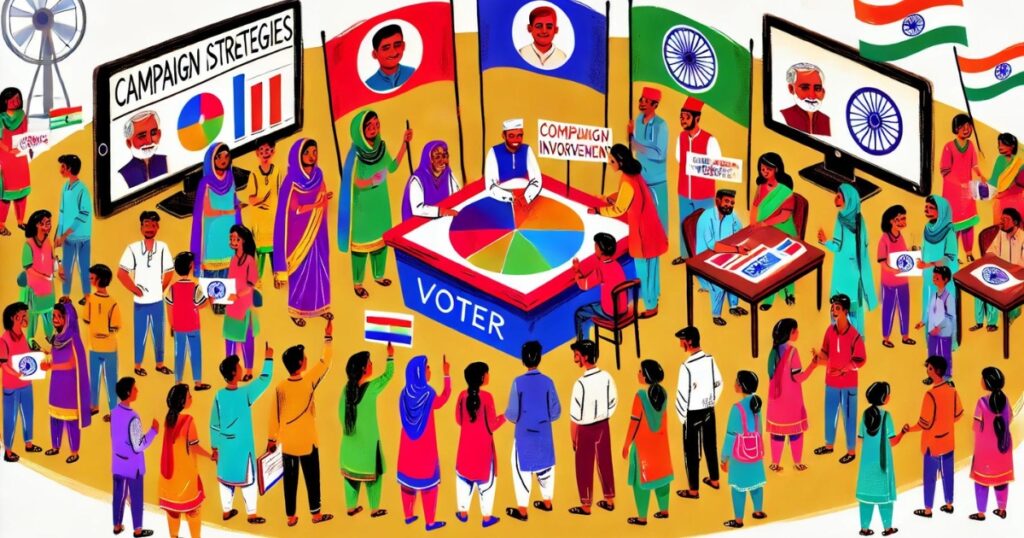
Campaign strategies targeting social identities are essential for political parties seeking to effectively engage voters in a diverse society like India.
These strategies leverage various social identities—such as caste, religion, gender, and regional affiliations—to create tailored messages that resonate with specific voter segments.
Understanding and implementing these strategies can significantly influence electoral outcomes.
a. Understanding Social Identities
Social identities are the characteristics that define individuals within a social context, influencing their values, beliefs, and political preferences.
In India, identities based on caste, religion, gender, and region play crucial roles in shaping electoral behaviour.
Recognizing these identities allows political parties to craft strategies that speak directly to the concerns and aspirations of different groups.
Caste:
The caste system in India remains a potent factor in electoral politics. Political parties often form alliances with specific caste groups to secure their support.
Religion:
Religious identity can greatly influence voting patterns, with parties appealing to specific religious communities to garner votes.
Gender:
Gender identity has increasingly become a focus for political campaigns, with parties aiming to address women’s issues and encourage their participation in the electoral process.
Regional Affiliation:
Regional identities and local issues can also be leveraged, as voters often prioritize candidates who understand their regional concerns.
b. Tailored Messaging and Communication
Effective campaign strategies involve crafting messages that resonate with the values, beliefs, and priorities of specific social groups. Tailored messaging enhances the emotional connection between the political party and the voter.
Caste-Based Messaging:
Parties may highlight policies that benefit specific caste groups, such as reservations in education and employment. For example, the Bahujan Samaj Party (BSP) has successfully mobilized Dalit votes by emphasizing social justice and empowerment.
Religious Appeals:
Political campaigns often use religious symbols, language, and narratives to connect with religious communities. For instance, candidates may participate in religious festivals or address religious gatherings to strengthen their ties with specific groups.
Gender-Focused Campaigns:
Recognizing the unique challenges faced by women, political parties may develop campaigns that focus on women’s rights, safety, and empowerment.
Initiatives like “Beti Bachao, Beti Padhao” (Save the Girl Child, Educate the Girl Child) aim to resonate with female voters.
Regional Issues:
Addressing local concerns through region-specific messaging can be effective. For instance, candidates may focus on agricultural issues in rural constituencies or urban development in metropolitan areas.
c. Utilizing Social Media and Digital Platforms
The rise of digital media has transformed how political parties engage with voters. Social media platforms provide an avenue for targeted outreach and engagement, allowing for more personalized communication.
Targeted Advertising:
Political parties can use data analytics to identify and target specific voter segments based on their social identities.
For example, ads highlighting policies relevant to women or certain caste groups can be directed to those demographics.
Grassroots Mobilization:
Social media campaigns can facilitate grassroots mobilization by encouraging supporters from specific social groups to share messages within their networks.
Hashtags and online movements can amplify these messages and create a sense of community.
Influencer Engagement:
Collaborating with influencers or community leaders from specific social identities can enhance credibility and outreach. These figures can effectively communicate party messages and values to their followers.
d. Building Alliances and Coalitions
Political parties often form alliances with other parties or groups that share similar social identities to broaden their voter base. These coalitions can enhance electoral strength and improve chances of success.
Caste Alliances:
Parties may join forces with caste-based organizations to consolidate votes. For instance, during elections, parties may enter into seat-sharing agreements with smaller parties representing specific caste groups.
Religious Coalitions:
Forming alliances with religious organizations can help parties gain support from religious communities. These coalitions can mobilize voters around shared values and interests.
Regional Partnerships:
Regional parties often form alliances to address local issues more effectively. Such partnerships can create a unified front to challenge larger national parties.
e. Addressing Intersectionality
Social identities often intersect, creating complex voter profiles that require nuanced campaign strategies. Understanding intersectionality helps parties address the overlapping concerns of various identities.
Multi-Dimensional Messaging:
Campaigns can focus on the intersections of caste, gender, and religion, addressing the unique challenges faced by individuals with multiple identities.
For instance, policies that benefit lower-caste women can be highlighted to resonate with this demographic.
Inclusive Platforms:
Creating platforms that address the concerns of diverse social identities can enhance voter engagement.
Political parties can hold community meetings or town halls to gather feedback and understand the needs of different groups.
f. Case Studies of Successful Campaigns
Analyzing successful campaigns that effectively targeted social identities can provide valuable insights:
Bharatiya Janata Party (BJP):
The BJP has successfully mobilized Hindu voters by emphasizing cultural nationalism and aligning its policies with Hindu sentiments.
Campaigns during the Ram Janmabhoomi movement and the promotion of Hindutva have strengthened its support base among Hindu communities.
Bahujan Samaj Party (BSP):
The BSP has strategically targeted Dalit voters, focusing on social justice, empowerment, and representation.
The party’s messaging emphasizes the rights of marginalized communities, resonating with its core constituency.
Aam Aadmi Party (AAP):
AAP’s campaigns in Delhi have successfully addressed urban issues, appealing to a diverse voter base. By focusing on anti-corruption, education, and healthcare, the party has connected with voters across social identities.
g. Challenges and Considerations
While targeting social identities can enhance electoral success, several challenges must be addressed:
Stereotyping and Polarization:
Overemphasis on social identities can lead to stereotyping and further polarization among communities. Political parties must navigate these sensitivities carefully.
Changing Dynamics:
Social identities are not static; they evolve over time. Political parties must remain attuned to these changes and adapt their strategies accordingly.
Backlash and Resistance:
Targeted strategies may face backlash from other social groups or be perceived as exclusionary. Political parties must balance their outreach to avoid alienating other voter segments.
Campaign strategies targeting social identities are vital for political parties seeking to engage voters in a diverse society like India.
By tailoring messaging, leveraging digital platforms, building alliances, and addressing intersectionality, parties can effectively connect with different voter segments.
However, these strategies must be approached with sensitivity to avoid reinforcing stereotypes and fostering division.
As India continues to evolve, the ability to navigate social identities will be critical for political success in future elections.
Conclusion:
In conclusion, understanding the major determinants of elections, particularly social identities and media, is crucial for comprehending electoral behaviour in India.
Social identities shape political preferences, while media is a powerful tool for informing and influencing voters.
As the political landscape continues to evolve, recognizing the interplay between these determinants will be essential for both political analysts and voters alike.
The implications for future elections are significant. As social identities become increasingly salient, and as media continues to evolve, the dynamics of electoral politics will undoubtedly shift.
Enhancing media literacy among voters will be essential in navigating the complexities of electoral information and misinformation.
In a democratic society, active participation in the electoral process is vital.
Voters must critically engage with the media and be informed about the social identities that shape their political landscape.
By doing so, they can contribute to a more informed electorate and a healthier democracy.
FAQs:
1. What are the major determinants of elections in India?
The major determinants of elections in India include social identities such as caste, religion, and gender, as well as the influence of media, both traditional and digital. These factors significantly shape voter preferences and electoral outcomes.
2. How does caste influence voting behaviour in India?
Caste plays a crucial role in Indian politics. Voters often align with parties that represent their caste interests, leading to caste-based voting patterns. Political parties leverage caste affiliations to mobilize support, which can significantly impact election results.
3. In what ways does religion affect electoral outcomes?
Religion influences voter behaviour through the mobilization of religious communities. Political parties often cater to specific religious groups, which can lead to communal polarization and affect voting patterns. For example, Hindu nationalism has played a significant role in recent elections.
4. What role does gender play in elections?
Gender identity is an essential determinant of voting behaviour in India. While women’s participation in elections is increasing, challenges such as safety concerns and social norms persist. Political parties are increasingly recognizing the importance of women-focused policies to attract female voters.
5. How does media influence electoral outcomes in India?
Media serves as a critical tool for informing voters about candidates and issues. It shapes public perception through agenda-setting and framing, influencing what voters prioritize. The rise of social media has further transformed electoral dynamics, enabling rapid communication and mobilization.
6. What is the impact of social media on elections?
Social media has become a powerful platform for political communication and engagement, especially among younger voters. It allows political parties to reach broader audiences quickly. However, the spread of misinformation on social media can also pose significant challenges to informed voting.
7. How do social identities and media intersect in shaping electoral behaviour?
Social identities influence how individuals perceive media messages, while media representations can reinforce or challenge these identities. Political parties often tailor their media campaigns to appeal to specific social groups, leveraging social identities to maximize electoral support.
8. Why is media literacy important for voters?
Media literacy is crucial for voters to critically evaluate information and recognize misinformation. As media plays a significant role in shaping electoral outcomes, informed voters are better equipped to make decisions that reflect their interests and values.
9. What can voters do to ensure they are well-informed during elections?
Voters can enhance their knowledge by consuming information from multiple reliable sources, engaging in discussions, and critically analyzing media content. Understanding the social identities that shape political narratives can also help voters make informed choices.
10. What are the implications of social identities and media influence for future elections in India?
As social identities continue to evolve and media strategies become more sophisticated, the dynamics of electoral politics in India will likely change. Recognizing the interplay between these determinants will be essential for understanding future electoral outcomes and voter behaviour.


